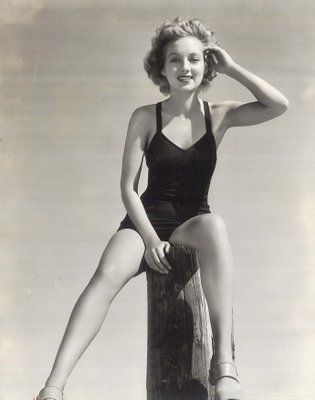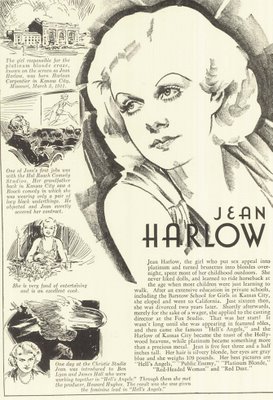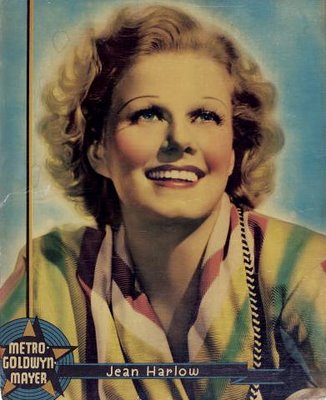

Captains Courageous and Freddie's Liberty No-Show
 Jason Apuzzo over at LIBERTAS recommended Captains Courageous a week or so ago and I decided to take another look at it. You go for years ignoring pictures like this and they’re always a surprise upon revisiting. C.C. asserted itself often enough in documentaries where that clip of Spencer Tracy singing with an accent played seemingly on a loop. For a lot of people, it summed up the meaning of a classic movie moment. Captains Courageous has long been recognized as Tracy’s picture, but for me, the billing tells the truer story. This is Freddie Bartholomew’s show, and he’s fantastic throughout. I’d forgotten how effective kid actors could be in those days. What a shame Freddie had to grow up, and how unfortunate that MGM dropped him so callously after typecasting the child into a rut during his prime earning years. Audiences react differently to bratty kids in movies. It’s enough for most of us to wait for the character to receive his comeuppance and become a better boy. Sometimes if the youngster is particularly revolting like Jackie Searle or David Holt, we long for him to be punished straightaway, if not killed off altogether. Bartholomew walks that fine line of viewer tolerance, but never crosses it. I was happy to see him fall off the ocean liner, but I didn’t want to see him drown. Is this what separates great child actors from merely competent ones? For such a fine performer, Freddie got a bum deal in American movies. His British propriety looked sissified to many, and some of the roles seemed old-fashioned even then (Little Lord Fauntleroy). I’ll bet there were gangs of boys waiting around stage doors to beat him up after personal appearances. His was the persistent voice of reason that kept scrappier youth like Mickey Rooney and Jackie Cooper out of harm’s way. Too often his character came across as a prig and a party pooper, but more about Freddie later …
Jason Apuzzo over at LIBERTAS recommended Captains Courageous a week or so ago and I decided to take another look at it. You go for years ignoring pictures like this and they’re always a surprise upon revisiting. C.C. asserted itself often enough in documentaries where that clip of Spencer Tracy singing with an accent played seemingly on a loop. For a lot of people, it summed up the meaning of a classic movie moment. Captains Courageous has long been recognized as Tracy’s picture, but for me, the billing tells the truer story. This is Freddie Bartholomew’s show, and he’s fantastic throughout. I’d forgotten how effective kid actors could be in those days. What a shame Freddie had to grow up, and how unfortunate that MGM dropped him so callously after typecasting the child into a rut during his prime earning years. Audiences react differently to bratty kids in movies. It’s enough for most of us to wait for the character to receive his comeuppance and become a better boy. Sometimes if the youngster is particularly revolting like Jackie Searle or David Holt, we long for him to be punished straightaway, if not killed off altogether. Bartholomew walks that fine line of viewer tolerance, but never crosses it. I was happy to see him fall off the ocean liner, but I didn’t want to see him drown. Is this what separates great child actors from merely competent ones? For such a fine performer, Freddie got a bum deal in American movies. His British propriety looked sissified to many, and some of the roles seemed old-fashioned even then (Little Lord Fauntleroy). I’ll bet there were gangs of boys waiting around stage doors to beat him up after personal appearances. His was the persistent voice of reason that kept scrappier youth like Mickey Rooney and Jackie Cooper out of harm’s way. Too often his character came across as a prig and a party pooper, but more about Freddie later …

 Accents are a curse upon otherwise fine actors. I cringe whenever John Barrymore or Laurence Olivier enter a room and make with the foreign inflections, because you know you’re stuck with it for the run of the feature, and most of the time, that’s agony. Even regional dialects culled from within our own shores can play like broken air-conditioners in a suffocating room.
Accents are a curse upon otherwise fine actors. I cringe whenever John Barrymore or Laurence Olivier enter a room and make with the foreign inflections, because you know you’re stuck with it for the run of the feature, and most of the time, that’s agony. Even regional dialects culled from within our own shores can play like broken air-conditioners in a suffocating room.



Back to Freddie. Long after the world’s applause had subsided, Freddie Bartholomew took to the road in a stock version of The Hasty Heart during Spring of 1948. It seemed incredible that David Copperfield himself would turn up in a backwoods town like ours, but Liberty owner Ivan Anderson and his manager Colonel Roy Forehand weren’t kidding when they advertised Bartholomew and the original Broadway cast for one performance only on March 16. Rest assured these admission prices were quite unheard of in a town where big-time stage attractions usually amounted to no-name bands, hillbilly singers, and sometime cowboy sidekicks. Mail order tickets were something I never experienced at the Liberty in all of years going there. Truly this was the season event for 1948 … until it got cancelled. The specifics of what happened are lost in the mists of time, but Mr. Anderson was determined to get back the $1,592.37 in lost revenue (mostly advance tickets he had to make good on). Toward that end, he filed a lawsuit against the stage company after tracing their whereabouts to Savannah, Georgia, where lawyers on behalf of the Liberty Theatre impounded props and costumes for The Hasty Heart. The defendant was identified as one Larry Lerouge, representing Imperial Players out of New York. By this time, Freddie had repaired to hotel digs, having lost a tooth filling. Freddie has played shows when he had a fever of 103 and a cracked rib, said his chagrined wife when advised the show may not go on, and shortly after Freddie defended honor by declaring this was merely an argument between theatres and managers having nothing to do with him. With regards the final outcome, I’ve no idea as to whether Mr. Anderson got his money back, and of course, there is no one left I could ask.
 Jason Apuzzo over at LIBERTAS recommended Captains Courageous a week or so ago and I decided to take another look at it. You go for years ignoring pictures like this and they’re always a surprise upon revisiting. C.C. asserted itself often enough in documentaries where that clip of Spencer Tracy singing with an accent played seemingly on a loop. For a lot of people, it summed up the meaning of a classic movie moment. Captains Courageous has long been recognized as Tracy’s picture, but for me, the billing tells the truer story. This is Freddie Bartholomew’s show, and he’s fantastic throughout. I’d forgotten how effective kid actors could be in those days. What a shame Freddie had to grow up, and how unfortunate that MGM dropped him so callously after typecasting the child into a rut during his prime earning years. Audiences react differently to bratty kids in movies. It’s enough for most of us to wait for the character to receive his comeuppance and become a better boy. Sometimes if the youngster is particularly revolting like Jackie Searle or David Holt, we long for him to be punished straightaway, if not killed off altogether. Bartholomew walks that fine line of viewer tolerance, but never crosses it. I was happy to see him fall off the ocean liner, but I didn’t want to see him drown. Is this what separates great child actors from merely competent ones? For such a fine performer, Freddie got a bum deal in American movies. His British propriety looked sissified to many, and some of the roles seemed old-fashioned even then (Little Lord Fauntleroy). I’ll bet there were gangs of boys waiting around stage doors to beat him up after personal appearances. His was the persistent voice of reason that kept scrappier youth like Mickey Rooney and Jackie Cooper out of harm’s way. Too often his character came across as a prig and a party pooper, but more about Freddie later …
Jason Apuzzo over at LIBERTAS recommended Captains Courageous a week or so ago and I decided to take another look at it. You go for years ignoring pictures like this and they’re always a surprise upon revisiting. C.C. asserted itself often enough in documentaries where that clip of Spencer Tracy singing with an accent played seemingly on a loop. For a lot of people, it summed up the meaning of a classic movie moment. Captains Courageous has long been recognized as Tracy’s picture, but for me, the billing tells the truer story. This is Freddie Bartholomew’s show, and he’s fantastic throughout. I’d forgotten how effective kid actors could be in those days. What a shame Freddie had to grow up, and how unfortunate that MGM dropped him so callously after typecasting the child into a rut during his prime earning years. Audiences react differently to bratty kids in movies. It’s enough for most of us to wait for the character to receive his comeuppance and become a better boy. Sometimes if the youngster is particularly revolting like Jackie Searle or David Holt, we long for him to be punished straightaway, if not killed off altogether. Bartholomew walks that fine line of viewer tolerance, but never crosses it. I was happy to see him fall off the ocean liner, but I didn’t want to see him drown. Is this what separates great child actors from merely competent ones? For such a fine performer, Freddie got a bum deal in American movies. His British propriety looked sissified to many, and some of the roles seemed old-fashioned even then (Little Lord Fauntleroy). I’ll bet there were gangs of boys waiting around stage doors to beat him up after personal appearances. His was the persistent voice of reason that kept scrappier youth like Mickey Rooney and Jackie Cooper out of harm’s way. Too often his character came across as a prig and a party pooper, but more about Freddie later …
 Accents are a curse upon otherwise fine actors. I cringe whenever John Barrymore or Laurence Olivier enter a room and make with the foreign inflections, because you know you’re stuck with it for the run of the feature, and most of the time, that’s agony. Even regional dialects culled from within our own shores can play like broken air-conditioners in a suffocating room.
Accents are a curse upon otherwise fine actors. I cringe whenever John Barrymore or Laurence Olivier enter a room and make with the foreign inflections, because you know you’re stuck with it for the run of the feature, and most of the time, that’s agony. Even regional dialects culled from within our own shores can play like broken air-conditioners in a suffocating room.Of countless southerners I’ve encountered over a life lived in Dixie environs, none have addressed me as Orson Welles does other cast members in The Long, Hot Summer. My query, then, to MGM producers --- Why must Spencer Tracy be Portuguese at all? They’re not shipping out of Portugal in Captains Courageous, and I dare say, fishermen from that country would almost certainly be loathe to go about speaking like Chico Marx. Joan Crawford drew that comparison when she first saw Tracy in costume, and it’s impossible to watch Captains Courageous without making a same connection. I keep thinking of how effective Tracy could have been if they’d just let him use his natural voice. As it is, I actually prefer Bartholomew’s scenes with Lionel Barrymore; here would be one of that actor’s final roles standing up, as within a year he’d be confined to either crutches or a wheelchair. Tracy is easier to take as the story progresses --- the real Oscar-worthiness of his performance lay in the actor’s ability to overcome disadvantages inherent in the role (inc. ringlet-curled hair). Was it engravers' idea of a joke to inscribe Dick Tracy on the initial Best Actor award Tracy was given for Captains Courageous? Worse came when MGM chief Louis B. Mayer stepped to the podium to pay his own acid tribute --- Tracy is a fine actor, but he is most important because he understands why it is necessary to take orders from the front office. Was this a public admonition for the sometimes drink-addled player, whose disappearances from the set caused production delays and overruns? Captains Courageous had a negative cost of $1.6 million, which was considerable money for 1937 (same year's A Day At The Races cost even more). Domestic rentals were $1.6 million, with foreign at $1.4. Final profit for the picture was $355,000.
So it’s designated a Family Classic, but would youngsters today be enticed by Captains Courageous? Initial obstacles are considerable, black-and-white among them, but the DVD is sufficiently rich to overcome some of prejudice. Courageous might otherwise work with kids. Has anyone tried it on theirs? Any film that traffics in emotional content is a gamble. How many features today deal seriously with coming of age topic, or father and son alienation/reconciliation? We can admire such material played straight. If such sentiment works even in brief, all else is forgiven of a picture to be admired and warmly remembered. I’ve read accounts of those who saw Captains Courageous first-run and never forgot the impact. We can’t know what it was like for audiences in 1937, but having watched the DVD, I could guess. This is another to see from what seems an objective distance until a moment comes along and there we are with a same tear in the eye as forebears dabbed away generations ago. Any picture that can deliver even so fleeting a glow deserves cherishing.



Back to Freddie. Long after the world’s applause had subsided, Freddie Bartholomew took to the road in a stock version of The Hasty Heart during Spring of 1948. It seemed incredible that David Copperfield himself would turn up in a backwoods town like ours, but Liberty owner Ivan Anderson and his manager Colonel Roy Forehand weren’t kidding when they advertised Bartholomew and the original Broadway cast for one performance only on March 16. Rest assured these admission prices were quite unheard of in a town where big-time stage attractions usually amounted to no-name bands, hillbilly singers, and sometime cowboy sidekicks. Mail order tickets were something I never experienced at the Liberty in all of years going there. Truly this was the season event for 1948 … until it got cancelled. The specifics of what happened are lost in the mists of time, but Mr. Anderson was determined to get back the $1,592.37 in lost revenue (mostly advance tickets he had to make good on). Toward that end, he filed a lawsuit against the stage company after tracing their whereabouts to Savannah, Georgia, where lawyers on behalf of the Liberty Theatre impounded props and costumes for The Hasty Heart. The defendant was identified as one Larry Lerouge, representing Imperial Players out of New York. By this time, Freddie had repaired to hotel digs, having lost a tooth filling. Freddie has played shows when he had a fever of 103 and a cracked rib, said his chagrined wife when advised the show may not go on, and shortly after Freddie defended honor by declaring this was merely an argument between theatres and managers having nothing to do with him. With regards the final outcome, I’ve no idea as to whether Mr. Anderson got his money back, and of course, there is no one left I could ask.



















































